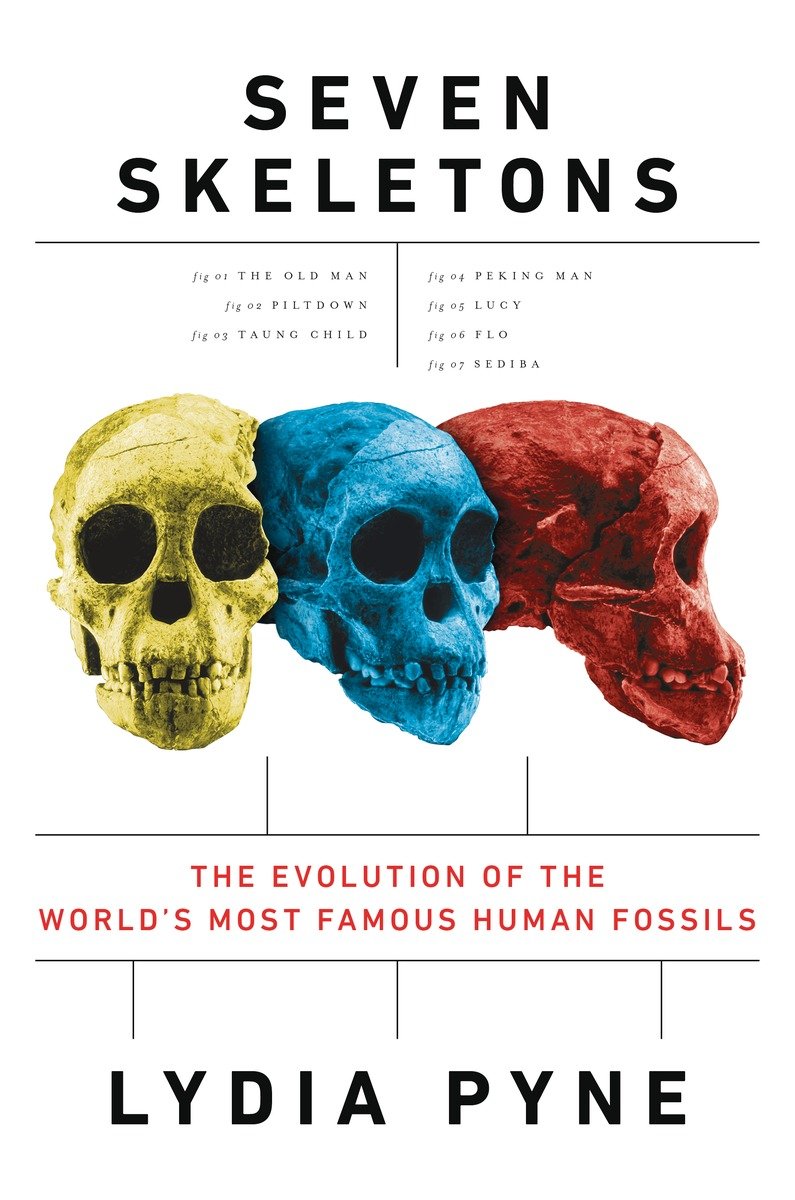
Seven Skeletons
The Evolution of the World's Most Famous Human Fossils
کتاب های مرتبط
- اطلاعات
- نقد و بررسی
- دیدگاه کاربران
نقد و بررسی

June 13, 2016
Pyne (Bookshelf), a historian and philosopher of science, superbly profiles seven fossils that she feels “tell us how scientific discoveries become written into popular culture and scientific ethos”: the “old man,” Piltdown Man, the Taung Child, Peking Man, Lucy, Flo, and Sediba. She makes clear their importance in helping people to understand both human evolution and the scientific process, while addressing larger cultural questions about the nature of celebrity and the role played by story and symbol. Pyne acknowledges that there are many fossils that play a central role in telling the story of human evolution, but she argues that these seven have acquired a cultural cachet that both add to and transcend their scientific value. Indeed, the stories associated with each fossil, the nicknames each has acquired, and the marketing arising from them have in many ways transformed paleoarchaeology as well as the popular understanding people have for evolutionary history. As Pyne notes, such stories “humanize the australophithecines, and that’s a powerful thing. It makes the fossil record accessible to us as people, not just as scientists.” Pyne’s tales complement and flesh out the well-known narratives already associated with these fossils; her work impressively blends the humanities and science to greatly enrich both. Agent: Geri Thoma, Writers House.

Starred review from June 1, 2016
Describing human evolution through accounts of fossils that became media events might seem a publicity ploy, but science journalist Pyne (Institute for Historical Studies/Univ. of Texas; Bookshelf, 2016, etc.) pulls it off.Neanderthal bones have always created a media sensation, but the iconic "Old Man of La Chapelle" of 1908 made the biggest up until that point. A nearly 300-page expert analysis of the skeleton, an old man with an arthritic spine, "described the Old Man as kind of caveman--not a charismatic Fred Flintstone, but a savage, shuffling troglodyte bumbling his way across glaciated Europe." This kind of description continues to influence the popular picture of Neanderthals, although scientists now conclude that they looked rather like us. Tiny "Lucy" walked upright 3 million years ago, far earlier than experts theorized. Her discoverer's account was a bestseller, and huge crowds gather whenever her tiny skeleton tours museums around the world. Nothing stirs the popular imagination more than a vanished treasure such as the priceless ancient bones of Peking Man, lost in 1941. An exception might be a dramatic hoax such as Piltdown man, a modern human skull and ape jaw that made headlines and convinced most experts for 40 years that they had found the missing link. In 2004, there came the announcement of the discovery of a 3-foot-tall primitive human who lived on a small Indonesian island until 18,000 years ago. The film Lord of the Rings won the Academy Award for Best Picture that year, so journalists, no less enraptured than scientists, named it the Hobbit. Ian Tattersall's The Strange Case of the Rickety Cossack (2015) remains the best popular modern history of human evolution, but Pyne casts her net more widely, adding captivating accounts of how each discovery fascinated the mass media and entered literature and popular culture.
COPYRIGHT(2016) Kirkus Reviews, ALL RIGHTS RESERVED.

August 1, 2016
Pyne takes a unique approach to chronicling the great human fossil discoveries of the last century, aiming for the sweet spot where anthropology, history, and myth collide. The skeletons she discusses are all well known and significant and include the Old Man of La Chapelle, the Tuang Child, Peking Man, Lucy, Flo (the hominin who conjured comparisons to the Hobbit), the Sediba fossil, and, of course, the great hoax that was Piltdown Man. In each chapter, the fossil is introduced, those who found it and the circumstances behind the discovery are discussed, and then the real fun begins as the popular media coverage of the find and any resultant scientific infighting are analyzed. There is plenty of drama associated with these fossils, not the least of which is the continuing mystery surrounding the disappearance of Peking Man during WWII and everything everyone got wrong about Piltdown Man. The infusion of these dramas into the narrative makes Seven Skeletons highly readable and an excellent title for armchair explorers with dreams of their own history-making discoveries.(Reprinted with permission of Booklist, copyright 2016, American Library Association.)

March 15, 2016
History of science specialist Pyne, whose field and archival work have taken her from South Africa to Uzbekistan to the American Southwest, delivers an appreciation of human origins through seven distinct fossils--all with stories of their own. The three-foot-tall "hobbit" from Flores, the Neanderthal of La Chapelle, the Taung Child, the Piltdown Hoax, Peking Man, Sediba, and Lucy are skeletons important to science not only for the understanding they have yielded (even as hoaxes) but for serving to excite public interest in our ancient, ancient history. In fact, the two million-year-old Sediba fossil claims a significant following on Twitter. Way to go, Sediba.
Copyright 2016 Library Journal, LLC Used with permission.

























دیدگاه کاربران